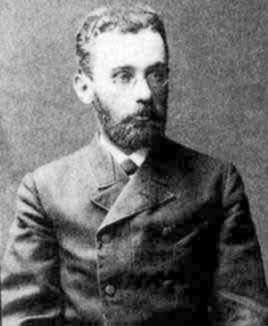
Robert Hjalmar Mellin
 المؤلف:
G Elfving
المؤلف:
G Elfving
 المصدر:
Hjalmar Mellin (Swedish), Normat 28
المصدر:
Hjalmar Mellin (Swedish), Normat 28
 الجزء والصفحة:
...
الجزء والصفحة:
...
 1-3-2017
1-3-2017
 922
922
Born: 1854 in Liminka, Northern Ostrobothnia, Finland
Died: 1933

Hjalmar Mellin, the son of a clergyman, was born in Liminka, northern Ostrobothnia, in Finland in 1854. He grew up and received his schooling in Hämeenlinna (about 100 km north of Helsinki) and undertook his university studies in Helsinki, where his teacher was the Swedish
mathematician Gösta Mittag-Leffler. In the autumn of 1881 Mellin defended his doctoral dissertation on algebraic functions of a single complex variable. He made two sojourns in Berlin in 1881 and 1882 to study under Kurt Weierstrass and in 1883-84 he returned to continue his studies with Mittag-Leffler in Stockholm.
Mellin was appointed as a docent at the University of Stockholm from 1884-91 but never actually gave any lectures. Also in 1884 he was appointed a senior lecturer in mathematics at the recently founded Polytechnic Institute which was later (in 1908) to become the Technical University of Finland. In 1901 Mellin withdrew his application for the vacant chair of mathematics at the University of Helsinki in favour of his illustrious (and younger) fellow countryman E Lindelöf (1870-1946). During the period 1904-07 Mellin was Director of the Polytechnic Institute and in 1908 he became the first professor of mathematics at the new university. He remained at the university for a total of 42 years, retiring in 1926 at the age of 72.
With regard to the ever-burning language question, Mellin was a fervent fennoman with an apparently fiery temperament. It must be recalled, at this juncture, that Finland had for a long time been part of the kingdom of Sweden and had consequently been subjected to its language and culture. (After the Napoleonic wars Finland became an autonomous Grand Duchy under Russia, to finally emerge as an independent republic in the aftermath of the First World War.)
Mellin was one of the founders of the Finnish Academy of Sciences in 1908 as a purely Finnish alternative to the predominantly Swedish-speaking Society of Sciences. From 1908 until his death in 1933, at the age of 79, he represented his country on the editorial board of Acta Mathematica.
Mellin's research work was principally in the area of the theory of functions which resulted from the influence of his teachers Mittag-Leffler and Weierstrass. He studied the transform which now bears his name and established its reciprocal properties. He applied this technique systematically in a long series of papers to the study of the gamma function, hypergeometric functions, Dirichlet series, the Riemann zeta function and related number-theoretic functions. He also extended his transform to several variables and applied it to the solution of partial differential equations. The use of the inverse form of the transform, expressed as an integral parallel to the imaginary axis of the variable of integration, was developed by Mellin as a powerful tool for the generation of asymptotic expansions. In this theory, he included the possibility of high-order poles (thereby leading to the inclusion of logarithmic terms in the expansion) and to several sequences of poles yielding sums of asymptotic expansions of very general form.
During the last decade of his life Mellin was, rather curiously for an analyst, preoccupied by Einstein's theory of relativity and he wrote no less than ten papers on this topic. In these papers, where he was largely concerned with general philosophical problems of time and space, he adopted a quixotic standpoint in his attempt to refute the theory as being logically untenable.
Articles:
- G Elfving, Hjalmar Mellin (Swedish), Normat 28 (3) (1980), 89-94.
 الاكثر قراءة في 1850to1859
الاكثر قراءة في 1850to1859
 اخر الاخبار
اخر الاخبار
اخبار العتبة العباسية المقدسة


